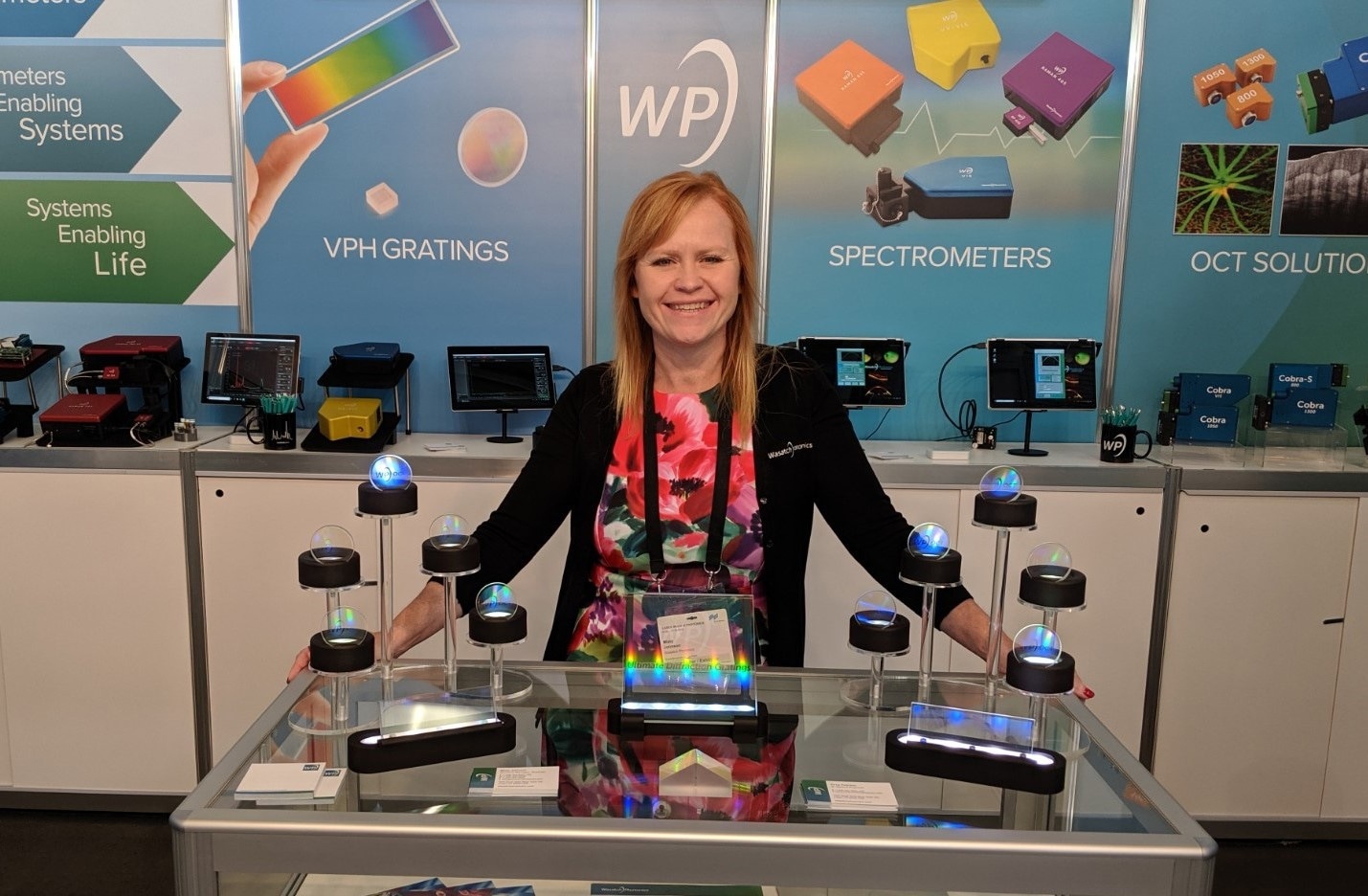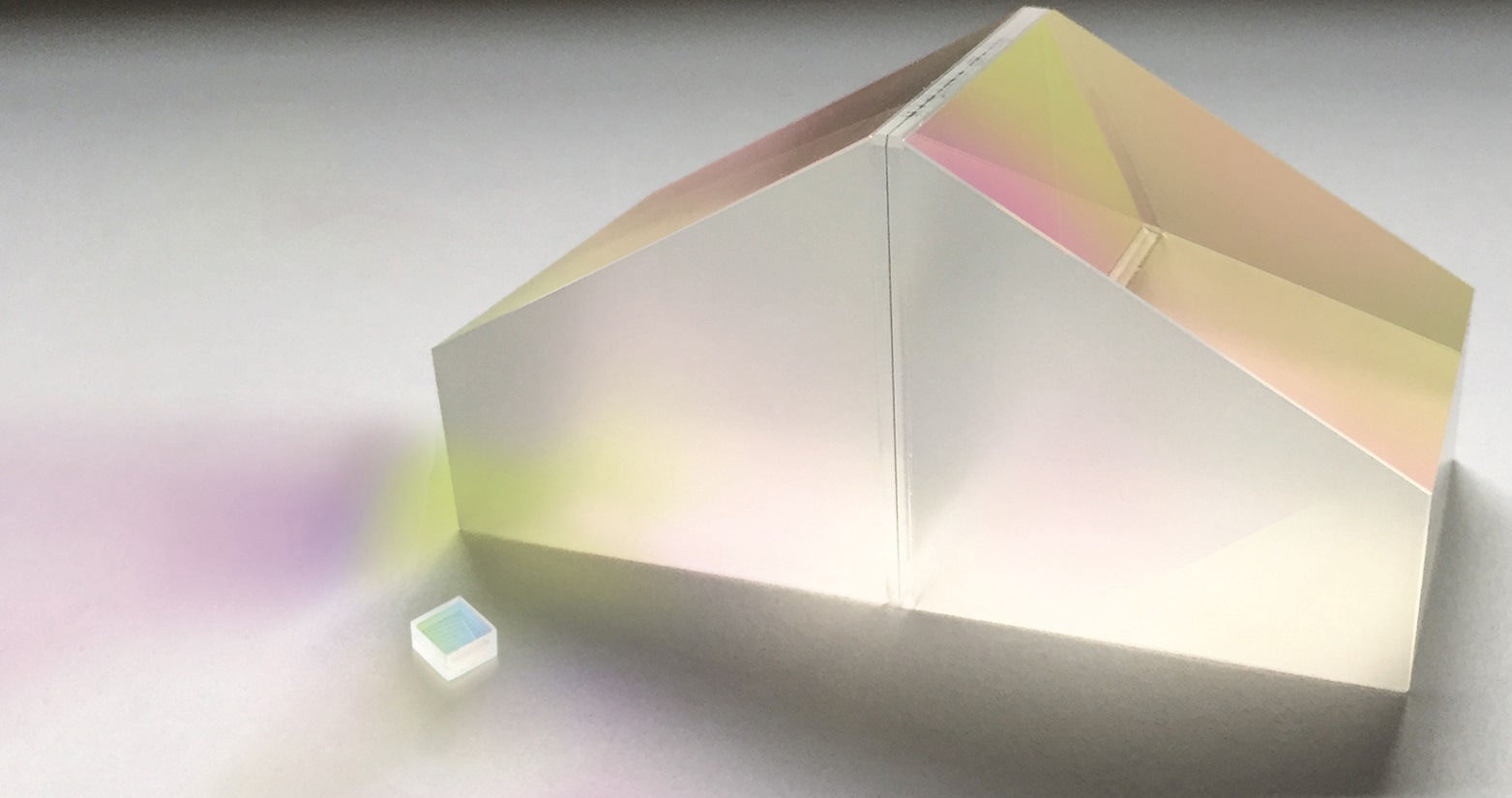
AZoOptics sat down with Wasatch Photonics at the LASER World of PHOTONICS 2019 show in Munich, Germany, to discuss their grating, spectroscopy, and optical coherence tomography (OCT) solutions, as well as their new software release for OCT applications.
Please tell us a bit about Wasatch Photonics.
Wasatch Photonics was founded in 2002, taking its name from the Wasatch Mountain Range in Utah, and began as a provider of volume phase holographic (VPH) gratings in dichromated gelatin. Since then, the company has expanded its offerings, and now produces VPH transmission gratings, spectrometers, and OCT solutions.

Our manufacturing process for VPH gratings involves encapsulating the grating structure between two AR coated surfaces, which enables more straightforward handling and cleaning. They are 40% more efficient than surface relief gratings and have incredibly high efficiency and broad bandwidth. They are also very polarization insensitive and allow more optically efficient, compact designs. VPH gratings have found applications in fields like OCT, astronomy, spectroscopy, and spectral imaging. They are also a popular choice for pulse compression in ultra-fast laser systems.
Regarding our optical coherence tomography gratings, we are proud to be the largest provider in the world, both for research and commercial ophthalmology instruments. We are also active in astronomy applications due to our ability to manufacture large format gratings up to 30x30 cm in size. These are ideally suited for more significant pieces of equipment, such as telescopes.
These VPH gratings, with their high-performance and broadband width, also naturally work very well in spectrometers. We parlayed that some time ago into an expansion of the business, adding compact spectrometers for Raman and spectral domain OCT. In recent years, under the management of CEO David Creasey, we have added UV-VIS, NIR, and many more Raman spectroscopy products; all feature our trademark high sensitivity and fast measurements.

Why did Wasatch Photonics exhibit at LASER World of PHOTONICS?
As LASER World of PHOTONICS is a photonics-based show, it gives us exposure to and provides interaction with a lot of companies across the industry for all three of our business units. In particular, our gratings team has an opportunity to meet with leading laser companies producing ultra-fast lasers and optical parametric oscillators.
Our gratings, due to their broad bandwidth and high efficiency, can work very well in pulse compressors or any application involving stretching out a short pulse with a broad bandwidth for amplification. They are also compatible with high-power pulses and are used in several commercial ultra-fast laser systems.

What other grating solutions are Wasatch Photonics showcasing?
Wasatch Photonics has a wide variety of form factors and several different sizes of gratings available. So, firstly, we are demonstrating that flexibility and range to the attendees.
Additionally, we are showcasing our grism capabilities. A grism is created by placing our diffraction grating between two prisms. It is considered a dispersive element and allows an in-line optical layout by exploiting the differences between prisms and gratings - i.e., the grating deflects red light more than violet, whereas prisms deflect violet light more than red.

What's neat about a grism is that it is excellent for hyperspectral imaging. Light can be separated into its components, but the beam deviations caused by each element are canceled out. Therefore, the light is dispersed with minimal impact on the overall travel direction of the beam. This gives you access to more optical configurations than you would have otherwise.
Here, we also have our micro grating; demonstrating that we can also work to very small sizes. As we manufacture the gratings ourselves, we have complete control over the design. This means we can be incredibly flexible with the specifications of the product.
Our optical designers will work with you to optimize polarization, bandwidth, and dispersion for your application, as well as any other parameters like size and form factor.
Wasatch Photonics launched their WP OCT software platform in January - please can you tell us a little about this and how you aim to serve the OCT market?
Optical coherence tomography (OCT), a method that captures images (both 2D and 3D) in micrometer-resolution using low-coherent light, started as a tool for ophthalmology. Initially, there were no commercial spectrometers available, so researchers got into the habit of designing their own.
For those working in the medical field, the optical design of these spectrometers requires a specific set of skills. Although knowledge and ability have significantly grown in the ophthalmology field, especially around the design of OCT spectrometers, it is still an entirely different thing to design it as a spectroscopist.
Wasatch Photonics has a core competency in spectroscopy, as well as the understanding of OCT applications, so can combine and optimize those high-performance spectroscopy design skills with the needs of OCT.
If typical users took one of their gratings and several off-the-shelf optical components to build an OCT spectrometer and then compared it to the performance of one of our spectrometers, they would see a tremendous difference. We can produce a much higher performing imaging tool, and when you examine the quality of the images and the tightness of the focus on the detector, you will see a massive improvement. With our OCT spectrometer, users will get a clearer image with greater depth, due to our ability to capture more light from the edges of the bandwidths.
So, what we tried to do is become the engine providers, enabling rather than designing systems for specific applications. While we do offer some systems for research, simply because consumers like our solutions and some have no interest in developing their own, we are not looking to be that application designer. Our technology and innovation is our hallmark, so we have tried to extend that from the hardware (i.e., the spectrometers and scanning probes) to the software.

That's where our new WP OCT software solutions & software development kits come in. In OCT, when working with an off-the-shelf camera, you could receive an inch-thick manual, containing all of the calls that can be made to the camera and encompassing every single possible application. It can be very time-consuming. You have to sift through the manual, figure out which complex series of calls are needed for your application, test it, and then optimize it.
What we have done is provide a shortcut to our customers. We designed a group of three software development kits.
One module is for image acquisition - it removes all of the excess calls and only displays the ones that are most useful to OCT researchers and product developers. Another module can interface with our scanning probes to really simplify the process of synchronization. The final module can quickly and powerfully process raw OCT camera data to generate and display 2D and 3D OCT images.
So, you can pick and choose which of these you would like based on what is appropriate for you. Even if you're using a camera of your own design, you can still use our processing software. It can significantly speed up your development time. By using these three software tools, one of our spectrometers, one of our probes and your own scanning arm and splitter, you can have a working OCT system in an hour, which is pretty incredible.
Do you think that is what makes Wasatch Photonics unique?
Yes, I would say so. We are not looking to create applications-specific instruments or take away from our customers - we seek to enable our customers and create innovative things, but with the knowledge and understanding of the techniques to allow them to do more, faster.
That's something we do across the board in all our business units, from gratings to OCT to spectroscopy. We are an innovative, independently owned manufacturer seeking to enable game-changing solutions in research and industry. We come to work because we believe science has the power to effect real change in the world, and we want to make a lasting contribution.
About Cicely Rathmell
Cicely Rathmell is the Vice President of Marketing at Wasatch Photonics. She has 20 years of experience in optics and photonics, working in research, applications engineering, product management, technical writing, and sales prior to joining Wasatch Photonics. She has worked at JDS Uniphase, Ocean Optics, Semrock, and Gulf Fiberoptics, as well as operating her own technical writing and consulting firm serving several prominent photonics companies. She holds a BSc in Physics and Chemistry, and an MSc in laser spectroscopy.
Disclaimer: The views expressed here are those of the interviewee and do not necessarily represent the views of AZoM.com Limited (T/A) AZoNetwork, the owner and operator of this website. This disclaimer forms part of the Terms and Conditions of use of this website.